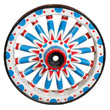Sells Floto Circus Three Arch Corporation Cage # 19
In researching the Corporation cages, the first evidence of this cage appears in the 1924 season on the Sells-Floto Circus. Solid evidence again appears in 1927, 1929 and 1930 on the Sells-Floto Circus. Being assured of its existence in 1924, allows us to be certain this wagon was built in the Peru, Indiana winter quarters of the American Circus Corporation under the watchful guidance of wagon master, William “Cap” Curtis and his crew.The wagon was a narrow bodied cage with the rear wheels outside of the frame of the wagon. This was one of the big cage act cage wagons. It has a chute on the left hand side with three small compartments inside the cage. This wagon was designed to be used in line with other cages to run the animals into the steel arena and back out again.
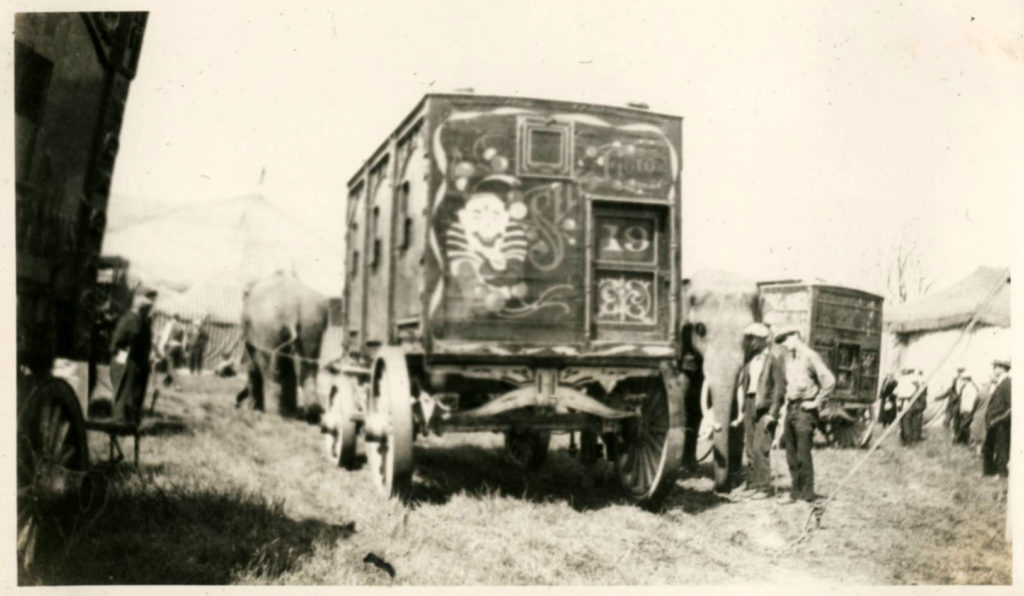 ( 1927 Sells-Floto Cage # 19 – Wed. June 8, 1927 in Newport, RI )
( 1927 Sells-Floto Cage # 19 – Wed. June 8, 1927 in Newport, RI )
As seen in this photo, the cage was red with a nice lettering and scroll work paint scheme. This continued through 1930 as evidenced by a photo at the Circus World Museum that verified it. After the Sells-Floto Circus was pulled off the road following the close of their 1932 season, the Hagenbeck-Wallace Circus started to use this cage. We are certain it was used in 1934. the wagon was painted an odd color. It doesn’t appear to be a red and it’s definitely not white, as it has some painted scroll on the sides. The wagon was re-numbered # 21.
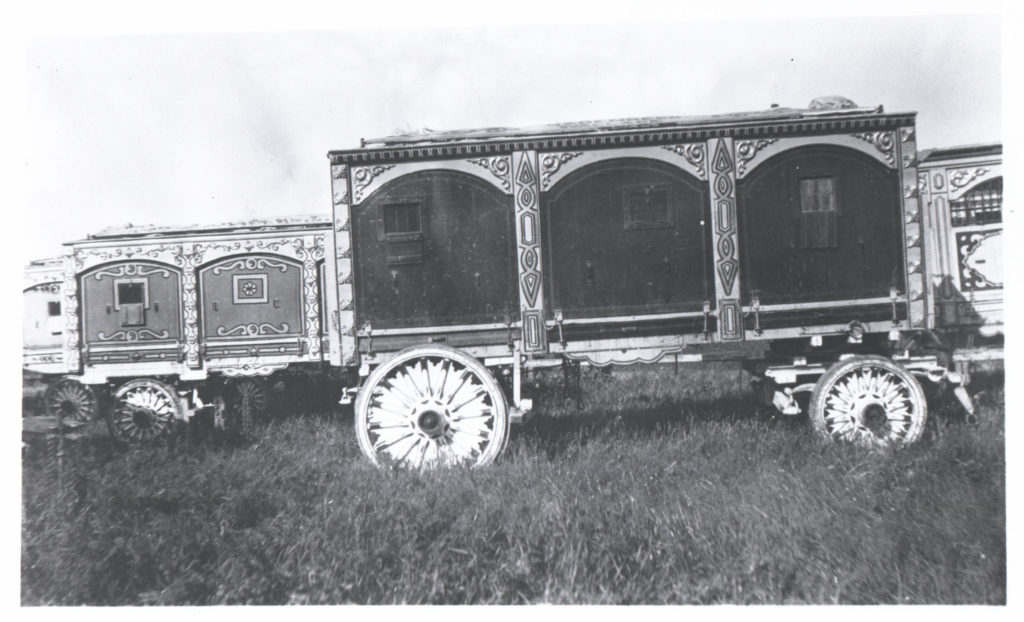 ( 1934 – Hagenbeck-Wallace cage # 28 on right and # 21 in center – C.H. Bennett photo )
( 1934 – Hagenbeck-Wallace cage # 28 on right and # 21 in center – C.H. Bennett photo )
It is not clearly known if this cage went out on the 1935 Hagenbeck-Wallace and Forepaugh-Sells Bros. Circus or not. It did not travel in 1936 as all of the Corporation shows were closed except Hagenbeck-Wallace and the Al G. Barnes Circus. While the Barnes show did go out in 1936, the Hagenbeck-Wallace Circus did not.
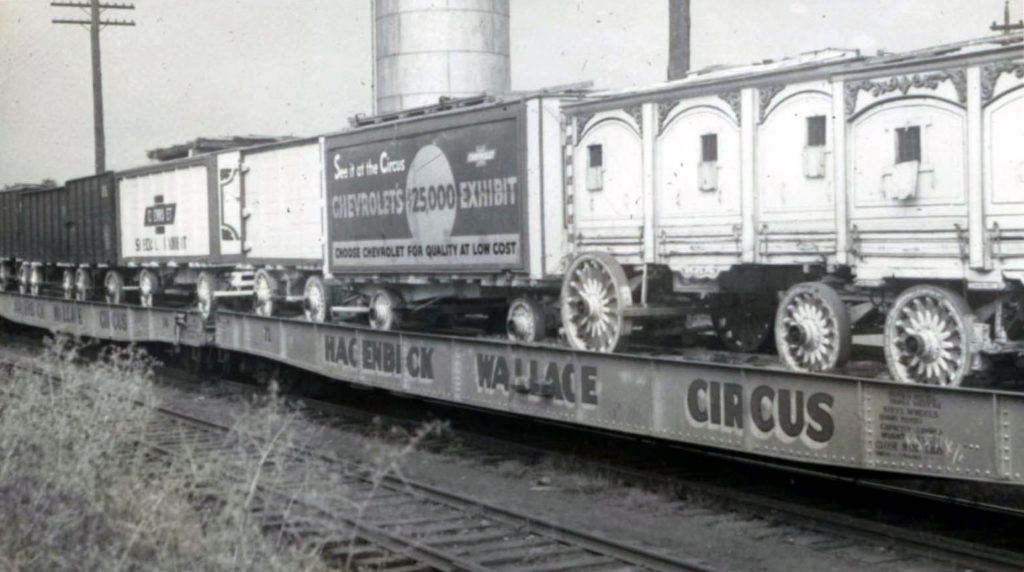 ( 2nd cage from the right – 1937 Hagenbeck-Wallace Circus – Eddie Jackson photo )
( 2nd cage from the right – 1937 Hagenbeck-Wallace Circus – Eddie Jackson photo )
In 1937, the wagon was definitely white and still carrying the # 21. The 1938 season saw the same thing. The cage went out on the 1938 Hagenbeck-Wallace Circus. While operating under a lease agreement to Howard Bary, the show folded out in California. The show was moved to the Al G. Barnes winter quarters which was still touring. It was here that the show was again leased to become the Great American Circus in 1939. That show was very short lived and it all returned to the now vacant Al G. Barnes winter quarters. Louis Goebel made an offer to buy the wagons for his movie prop business.He then leased much of it out in 1945 for the Arthur bros. Circus. This cage remained # 21 on the Arthur Bros. Circus.
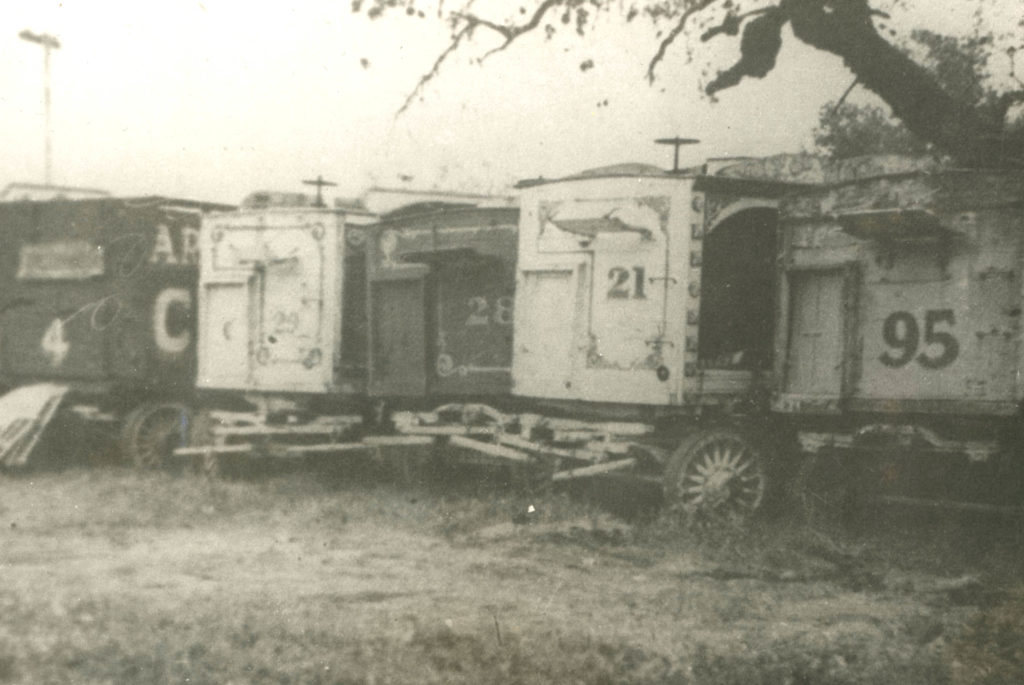 ( 1945 – near Jungleland – Joseph Bradbury Album # 28, Photo # 38A )
( 1945 – near Jungleland – Joseph Bradbury Album # 28, Photo # 38A )
The wagon remained in the Louis Goebel holdings at Jungleland and / or World Jungle Compound in Thousand Oaks, California for many years being used as a movie prop on occasions and mostly sitting out in a field uncared for.
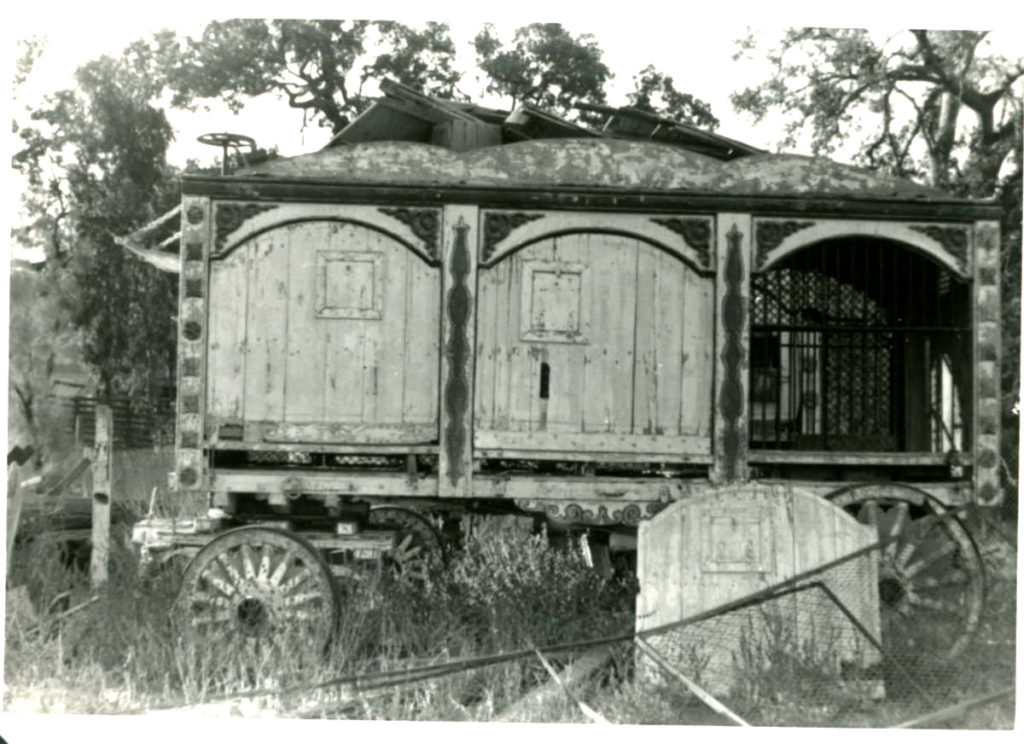 ( 1953 – Joseph Bradbury Album # 15, photo # 67C – Feb. 5, 1953 at World Jungle Compound )
( 1953 – Joseph Bradbury Album # 15, photo # 67C – Feb. 5, 1953 at World Jungle Compound )
In 1961, the wagon went to the Universal Studios where they put some repairs into it and repainted it. In 1963, the Universal Studios presented this wagon to the Circus World Museum. It was restored there to it’s former Sells-Floto days.
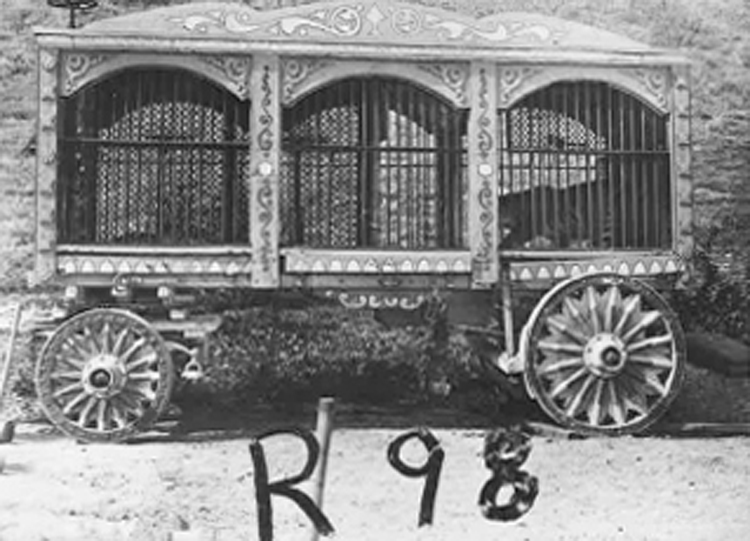
( 1962 – As was when Universal Studios gave this to CWM – Pfening Archives )
The cage is 17’8″ long x 8’2″ wide x 10’8″ tall and weighs 8,930 pounds.
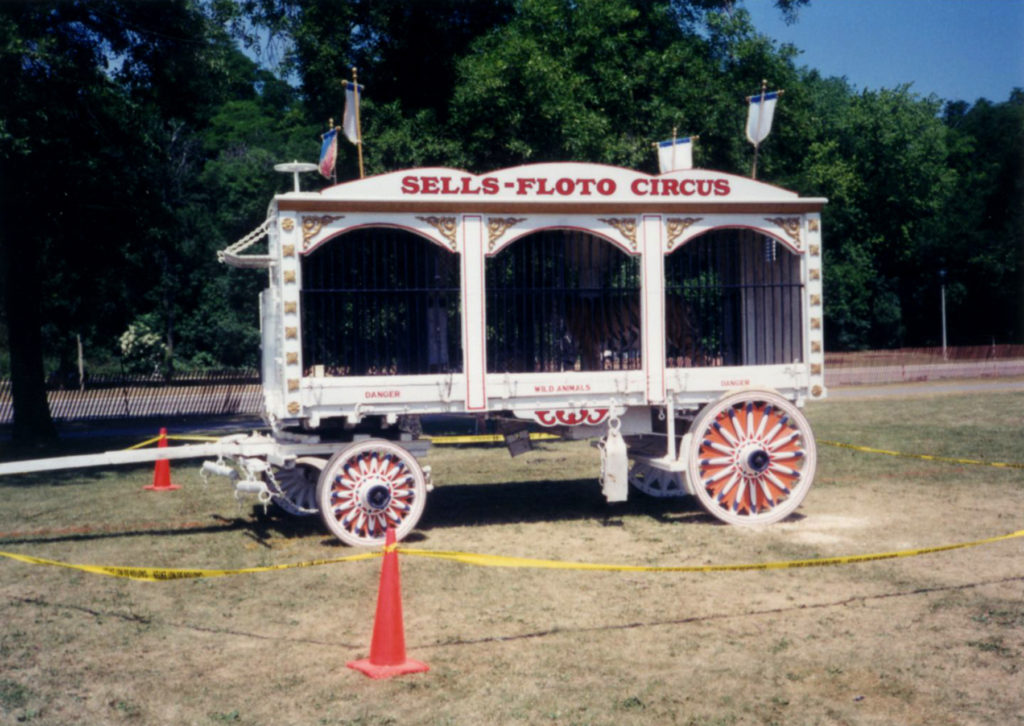 ( Bob Cline Photo )
( Bob Cline Photo )
The wagon can be seen in person at Circus World in Baraboo, Wisconsin
If you have any questions or have more photographic evidence, feel free to contact us at circuswagons@gmail.com
